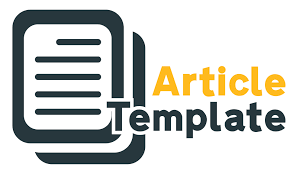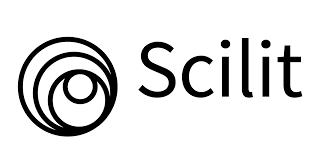Anti-Women Misinformation on YouTube
DOI:
https://doi.org/10.38043/commusty.v3i1.5093Keywords:
Women, Misinformation, Anti-WomenAbstract
YouTube has faced criticism for facilitating the spread of misinformation targeting women. This study analyzes anti-women content on YouTube to understand the types, volume, and potential harms of misinformation campaigns. Through a content analysis of videos, channels, and discussions networks, we identified common anti-women tropes including claims about feminism, gender politics, relationships, and women - men relationship. The sample of this study (N=100) was drawn from popular videos matching relevant keywords. Videos were coded for message framing. Results show an availability of wide range videos spreading anti women videos. Most of these videos are dominated by male speakers. This study provides empirical evidence that YouTube is a vector for organized misinformation targeting women, with concerning real-world implications. It is imperative for this platform to curb harmful anti-women propaganda using content moderation and algorithm governance.
References
Allcott, H., Gentzkow, M., & Yu, C. (2019). Trends in the diffusion of misinformation on social media. Research & Politics, 6(2), 2053168019848554. https://doi.org/10.1177/2053168019848554.
Aïmeur, E., Amri, S., & Brassard, G. (2023). Fake news, disinformation, and misinformation in social media: a review. Social Network Analysis and Mining, 13(1), 30. https://doi.org/10.1007/s13278-023-01028-5.
Anderson, J. (2017). Gender Stereotypes and Media: A Critical Discourse Analysis. Routledge.
Boutilier, A. (2022, October 7). Pierre Poilievre’s YouTube channel included hidden misogynistic tag to promote videos. Global News. https://globalnews.ca/news/9178531/pierre-poilievres-youtube-channel-included-hidden-misogynistic-tag-to-promote-videos/. Accessed 3 Feb. 2024.
Brown, L. M. (2020). Misinformation and media literacy. Oxford Research Encyclopedia of Communication.
Brown, L. (2022). Media literacy and gender: Strategies for combatting misinformation. Journal of Media Education, 20(3), 245-26.
Dixon, S. J. (2023, November 7). U.S. gen Z types of influencers followed 2023. Statista. https://www.statista.com/statistics/1420794/us-gen-z-types-influencers-followed/. Accessed 7 February 2024.
Garcia, M. F., & Martinez, P. (2022). The impact of anti-women misinformation on gender-based violence. Journal of Gender Studies, 10(3), 245-260.
Gupta, A., & Patel, R. (2023). Gendered narratives: The impact of misinformation on cultural norms. Journal of Gender and Cultural Studies, 12(4), 567-582.
Heritage, F., & Koller, V. (2020). Incels, in-groups, and ideologies: The representation of gendered social actors in a sexuality-based online community. Journal of Language and Sexuality, 9(2), 152-178.
Incubate, H. Y. I., & Males, M. (2022). New media masculinities. Rhetoric of Masculinity: Male Body Image, Media, and Gender Role Stress/Conflict, 287.
Jones, S. (2018). Social media and misinformation: A contemporary symbiosis. Media, Culture & Society, 40(3), 381-394.
Lee, R., et al. (2022). Understanding the dynamics of anti-women misinformation: A comprehensive review. Journal of Communication, 15(2), 123-140.
Lobato, E. J. C., & Zimmerman, C. (2019). Examining how people reason about controversial scientific topics. Thinking & Reasoning, 25(2), 231-255. https://doi.org/10.1080/13546783.2018.1521870
Malign creativity: How gender, sex, and lies are weaponized against women online. (2021). The Wilson Center.
Mamié, R., Horta Ribeiro, M., & West, R. (2021, June). Are anti-feminist communities gateways to the far right? Evidence from Reddit and YouTube. In Proceedings of the 13th ACM Web Science Conference 2021 (pp. 139-147).
McCullough, S. (2023). Online misogyny: The “Manosphere.” CMHR. https://humanrights.ca/node/1365. Accessed 3 Feb. 2024.
Martinez, P., & Johnson, E. (2017). Regulatory approaches to combating gender-based misinformation. Communication Law Review, 23(2), 167-184.
Milmo, D. (2022). YouTube is major conduit of fake news, factcheckers say. The Guardian. https://www.theguardian.com/technology/2022/jan/12/youtube-is-major-conduit-of-fake-news-factcheckers-say. Accessed 7 February 2024.
Online misogyny and abuse - TechSafety. (n.d.). https://techsafety.org.au/resources/resources-women/online_misogyny/
Papadamou, K., Zannettou, S., Blackburn, J., De Cristofaro, E., Stringhini, G., & Sirivianos, M. (2020). Understanding the incel community on YouTube.
Rajvanshi, A. (2023, February 21). Online misogyny is a national security threat, study finds. Time. https://time.com/6257188/disinformation-women-online-hate-study/
Ross, K., et al. (2019). Digital Misogyny: Online Abuse of Female Public Figures. Palgrave Macmillan.
Salice, B. (2019). The rise of a new anti-feminism: Spokeswomen of the alt-right and their appeals to women (Doctoral dissertation, The Ohio State University).
Smith, A., & Johnson, B. (2020). Misinformation in the Digital Age: A Comprehensive Analysis. Cambridge University Press.
Smith, R. (2019). Gender inequality and misinformation: A comprehensive analysis. Gender & Society, 28(1), 45-62.
Wang, Q., & Lee, Y. (2021). Impact of online misinformation on gender roles. Journal of Cybersecurity, 8(1), 45-60.
Wilson, E. (2019). Legal approaches to combating online misinformation. International Journal of Law and Information Technology, 27(4), 321-345.
Wu, L., Morstatter, F., Carley, K. M., & Liu, H. (2019). Misinformation in social media: Definition, manipulation, and detection. ACM SIGKDD Explorations Newsletter, 21(2), 80-90.
Yelin, H., & Clancy, L. (2021). Doing impact work while female: Hate tweets, ‘hot potatoes’ and having ‘enough of experts’. European Journal of Women's Studies, 28(2), 175-193.
Zahay, M. L. (2022). What “real” women want: Alt-right femininity vlogs as an anti-feminist populist narrative.
Downloads
Published
How to Cite
Issue
Section
License
Copyright (c) 2024 Md. Rifat Mahmud, Raiyan Bin Reza Raiyan Bin Reza

This work is licensed under a Creative Commons Attribution-ShareAlike 4.0 International License.















